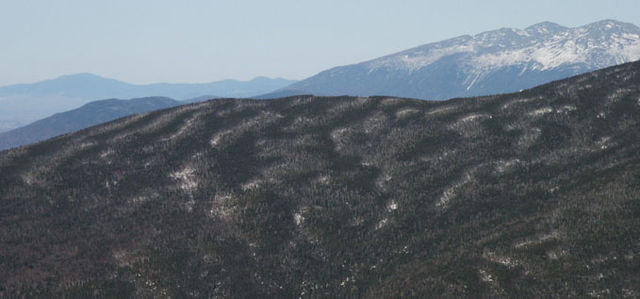Patterned vegetation is a vegetation community that exhibits distinctive and repetitive patterns. Examples of patterned vegetation include fir waves, tiger bush, and string bog. The patterns typically arise from an interplay of phenomena that differentially encourage plant growth or mortality. A coherent pattern arises because there is a strong directional component to these phenomena, such as wind in the case of fir waves, or surface runoff in the case of tiger bush. Patterns can include relatively evenly spaced patches, parallel bands, or some intermediate between those two. These patterns in the vegetation can appear without any underlying pattern in soil types, and are thus said to "self-organize" rather than be determined by the environment.
Aerial view of a gapped bush plateau in the W National Park, Niger. Average distance between two successive gaps is 50 meters.
View of fir waves in the United States
Tiger bush, or brousse tigrée in the French language, is a patterned vegetation community and ground consisting of alternating bands of trees, shrubs, or grass separated by bare ground or low herb cover, that run roughly parallel to contour lines of equal elevation. The patterns occur on low slopes in arid and semi-arid regions, such as in Australia, Sahelian West Africa, and North America.
Aerial view of a tiger bush plateau in Niger. Vegetation appears in dark while lighter pixels represent bare soil. The distance between successive vegetated bands varies between 60 and 120 meters.
Aerial oblique view of a gapped bush plateau in W National Park, Niger. The mean distance between two consecutive gaps is 50 meters
Aerial view of a tiger bush area in Niger with its typical vegetation pattern. There is a sharp boundary between the tiger bush area and the distant Sahelian plain where the vegetation is much sparser.
Panoramic view taken from the middle of a bare band in a tiger bush plateau near Batama-Béri, Niger. Altitude decrease from left to right (slope is about one percent).





